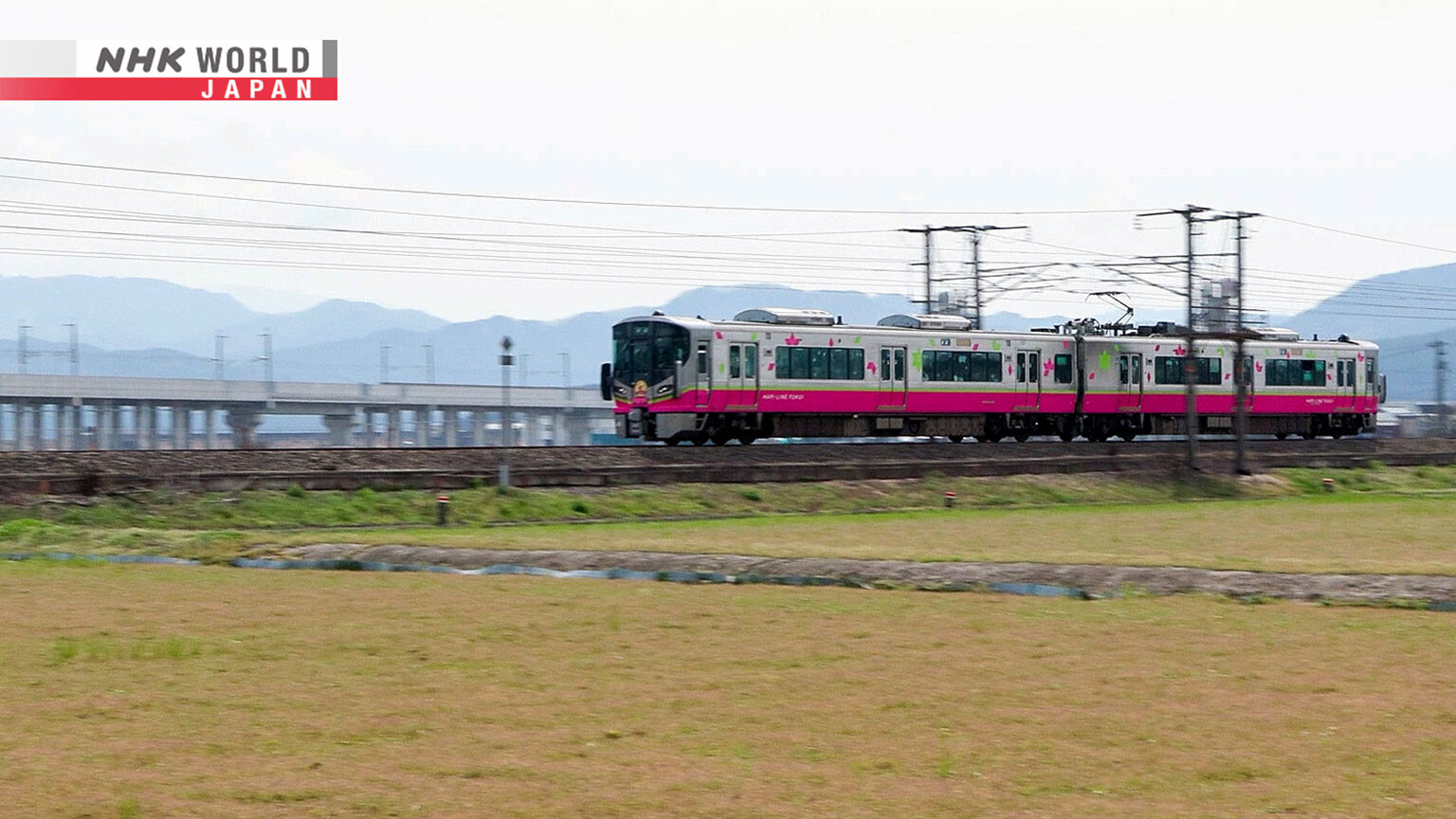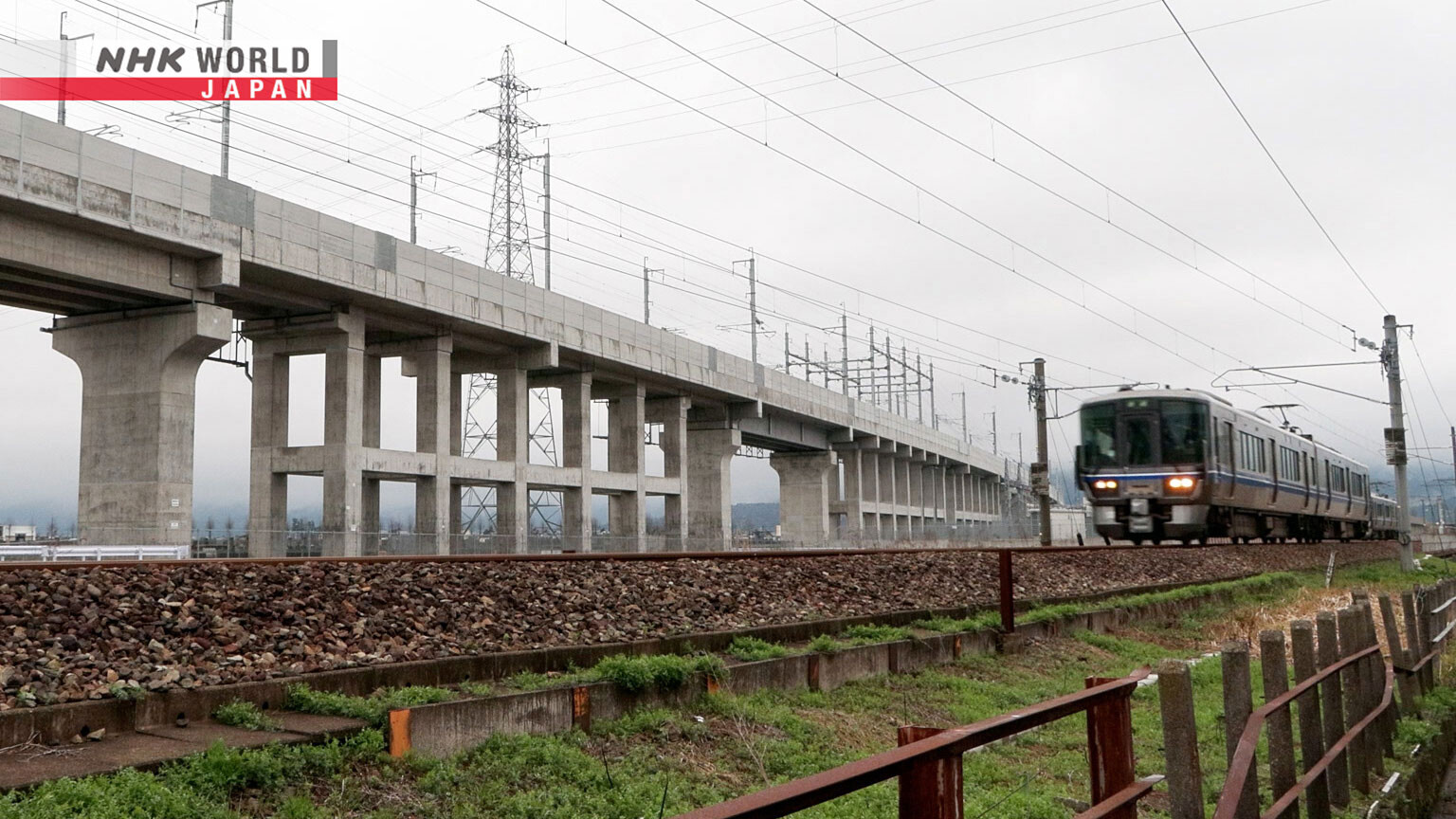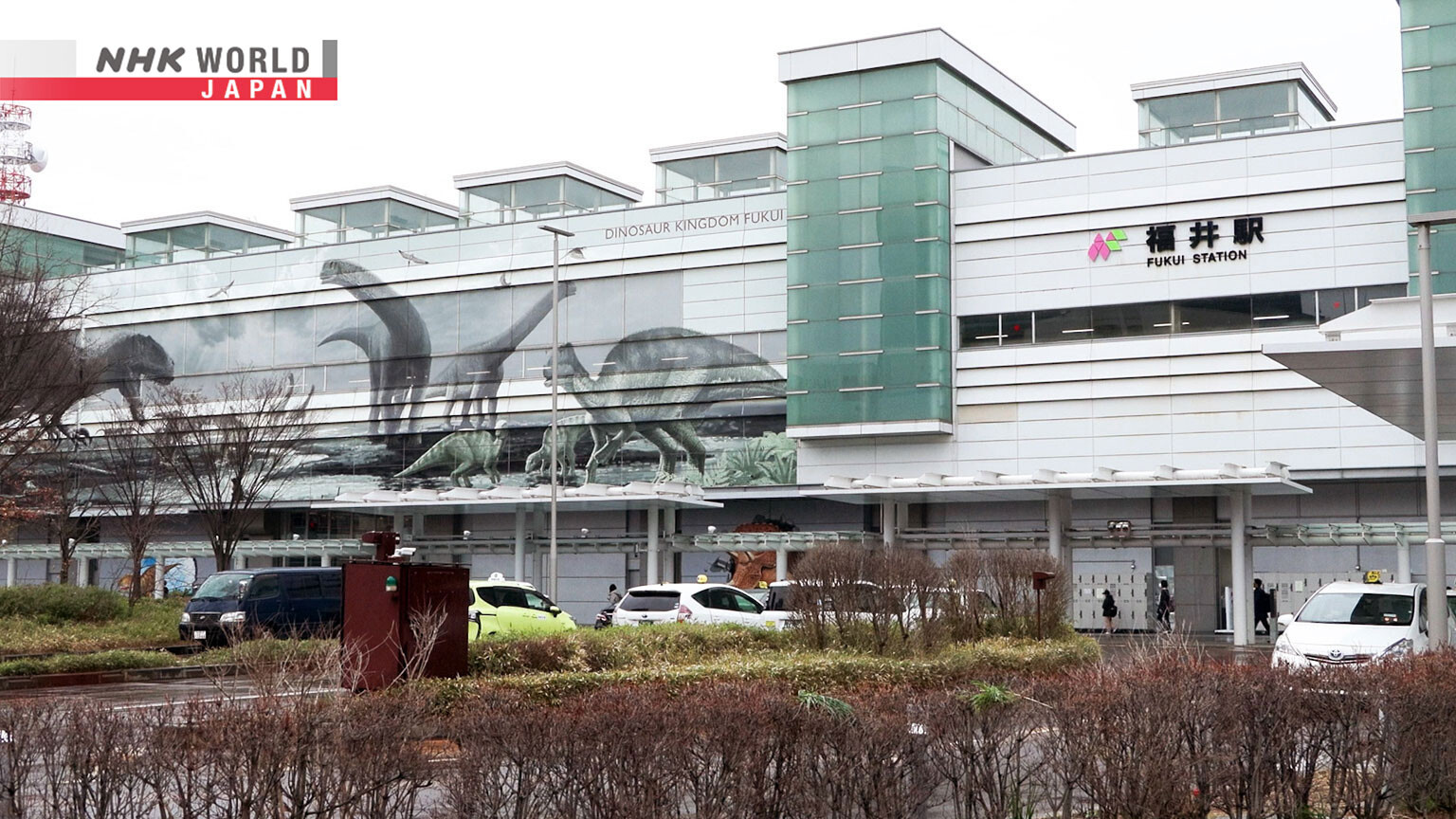Hapi-Line Fukui: Born Alongside the Shinkansen
Hapi-Line Fukui is a parallel conventional line that opened alongside the Hokuriku Shinkansen, running between Kanazawa and Tsuruga. See how the company plans to face its financial challenges.



Transcript
Welcome to Japan Railway Journal.
I'm Miki Clark and today, I will be joining you to bring you the program.
- Good to see you, Miki.
- Good to see you, too.
Today's program is all about the third-sector railway in Fukui prefecture, Hapi-Line Fukui.
Whenever a Shinkansen line opens,
the conventional line that runs parallel to the Shinkansen will be transferred from the JR to another operator.
This also happened in March this year when the Hokuriku Shinkansen extension opened.
And Hapi-Line Fukui was set up to succeed part of the Hokuriku Main Line within Fukui Prefecture.
Oh that's really interesting. I want to know more about it.
First, let's take a look at Hapi-Line Fukui.
On March 16th, the Hokuriku Shinkansen, which connected Tokyo to Kanazawa in Ishikawa Prefecture,
was extended to Tsuruga in Fukui Prefecture.
All along the line, opening ceremonies were held at the newly established Shinkansen stations,
with many people coming to celebrate the opening.
With the extension, the travel time between Tokyo and Fukui Stations was shortened by up to 36 minutes,
the shortest time now being just 2 hours and 51 minutes.
With the introduction of the Shinkansen line, visitor numbers are expected to increase,
causing an economic ripple effect throughout Fukui Prefecture.
However, parallel conventional lines have cause for concern.
That's because parallel conventional lines generally separate from JR when a Shinkansen line opens,
and become third-sector railways funded by local governments and other entities.
Tourists traveling from far away and business people commuting to and from work can opt to take the Shinkansen.
As a result, the parallel conventional line is now primarily used by local residents,
which will mean a significant decrease in revenue compared to the JR days.
With the extension of the Hokuriku Shinkansen,
the section of the Hokuriku Main Line that JR West operated in Fukui Prefecture became "Hapi-Line Fukui."
The line, which has 18 stations, covers a distance of 84.3 kilometers
between Daishoji Station, near the prefectural border of Ishikawa Prefecture, and Tsuruga Station.
All limited express trains that previously connected Osaka and Nagoya in western Japan to Kanazawa
now terminate at Tsuruga Station, with only local trains operating on the line.
The new name, "Hapi-Line Fukui," embodies the "happiness" that comes from connecting the various locations along the railway line.
The night before the JR line officially became Hapi-Line Fukui,
staff set about replacing all of the station signs at a rapid pace.
Here we go!
The rolling stock inherited from JR now features a pink and green stripe along the car body,
the company's corporate colors.
There are 16 train sets with 32 cars in total.
At the time of opening, the company had a total of 280 staff, including approximately 100 full-time employees,
as well as staff seconded from JR West and temp staff provided by the prefectural government.
Newly hired employees received training for sales positions and station counter duties.
Good morning!
New hires in technical positions received guidance from employees of JR West.
The plan is to handle all operational tasks entirely in-house within the next ten years.
Hapi-Line Fukui's president, Mr. Ogawa,
previously worked as a senior official at the Fukui Prefectural Office, the company's largest shareholder.
But prior to joining the prefectural office, he worked for Japanese National Railways.
Considering his background, Mr. Ogawa was the perfect choice to lead Hapi-Line Fukui.
As a railway company, we have an obligation
to ensure a safe and stable operation.
That sense of responsibility makes us more alert and determined.
This is Fukui Station, the hub for Hapi-Line Fukui.
In the JR days, the platforms used to accommodate 12-car express trains.
Now, they only serve local trains with 2 to 4 cars.
Even so, during rush hour, there are still many passengers, just like there were in the JR days.
Currently, Hapi-Line Fukui's target is 20,000 passengers per day.
However, due to inflation, regular fare and commuter pass fees went up 15%
and student pass fees increased by 5% from what they were in the JR days.
I'm not thrilled about the fare hike.
I had to pay around 20 yen extra. I wasn't expecting that.
Managing the railway is going to be a challenge,
especially considering the company's incomings and outgoings
so we decided to raise the fare set by JR by several percentage points.
This is Tsuruga Station, the terminal station of Hapi-Line Fukui.
Overseen by JR West, the station also services JR's local trains.
The Shinkansen station building is located to the east of the conventional line station building.
On the ground floor, platforms for JR's limited express trains
coming from the directions of Osaka and Nagoya have been constructed.
Until recently, passengers could take an express train to Fukui and Kanazawa
using conventional lines without transferring,
but with the opening of the Shinkansen, they now have to change at Tsuruga Station.
Despite the initial inconvenience, Hapi-Line Fukui sees an opportunity to increase its passenger numbers.
To make transfers easier, moving walkways were installed along the connecting passageway,
and the timetable was rearranged to make the wait-time between connections 20 minutes or less.
When people from outside the prefecture visit Fukui,
they'll see how convenient and efficient our transportation services are.
Once word gets out, we expect to see even more customers. At least, that's our plan.
I thought the opening of the shinkansen would be a happy occasion for the area along the line and region,
but in reality, it seems quite challenging.
Yes, indeed. Because, the parallel conventional lines would almost always experience decrease ridership,
and declining in ridership would almost always mean financial difficulties for operators that operate those lines.
Of course, they are the third sector railway operators,
so they can expect some subsidies from the public fund,
but that kind of subsidies are not guaranteed.
So I think it's almost inevitable for those operators to raise the fares.
But, regional railways are vital means of transportation for people who can't or wouldn't drive such as students or elderlies.
So I really hope that they would keep operating stably.
Yes, in order to realize that stable operation,
those operators should have good strategies to raise their income, you know.
Good examples that we can see in many parts of Japan would be to operate tourist trains,
so that they can boost the number of people coming into the region as tourists.
And, there should be other possibilities as the strategies.
Anyway Hapi-Line Fukui should have one or of more of them.
Yes.
Next, let's take a look at the strategies Hapi-Line Fukui plans to implement.
When Hapi-Line Fukui took over the operation,
they had to pay JR for the station buildings, tracks, and rolling stock.
Fukui Prefecture negotiated to keep the price of these railway assets as low as possible.
JR wanted us to buy the operation as a whole, but we first asked to see the fixed asset ledger.
We checked more that 10 thousand entries to make sure no unnecessary assets were included.
Initially, JR asked for 10 billion yen but we negotiated that down to 7 billion yen.
Initially, JR intended to hold on to the commercial facilities inside the station buildings and under the viaducts.
However, recognizing their value as potential sources of income for Hapi-Line Fukui,
persistent negotiations eventually led to their acquisition.
Hapi-Line Fukui's main income stream comes from passenger fares, with an expected annual income of 1.8 billion yen.
75% of this income comes from commuter and student passes.
From the moment Hapi-Line Fukui took over the operation,
it has worked to improve services for its regular passengers.
Back when JR ran the operation, there was approximately one local train per hour.
The company now runs two local trains per hour.
In addition, during the morning and evening rush hours,
rapid trains were introduced, operating between Fukui and Tsuruga.
The introduction of rapid trains has reduced the travel time between Fukui and Tsuruga by about 10 minutes.
With the discontinuation of the limited express trains,
the number of local trains, 102 when JR controlled the operation,
has increased to 131, which includes rapid trains.
It's great! The trains come more often now.
It's more convenient now.
Another significant source of income comes from track usage fees paid by JR Freight for the passage of freight trains.
This line, which is a major logistics route, sees over 30 freight trains daily,
generating track usage fees of over 1.7 billion yen annually.
Hapi-Line Fukui aims for an annual revenue of 4 billion yen,
combining income from passenger sales and track usage fees, among others.
Despite this, Fukui Prefecture estimates the company will lose approximately 7 billion yen in its first 11 years.
However, it's prepared to make up the deficit.
Considering Hapi-Line Fukui's financial situation,
the prefectural and local governments have created a management fund
to provide financial aid.
In light of this, the prefecture and Hapi-Line Fukui are collaborating
with other third-sector railways to reduce operating costs.
In Fukui Prefecture, there are two leading third-sector railways.
Fukui Railway, which operates tram services in and around Fukui City,
and Echizen Railway, a tourist route in Fukui Prefecture.
Under the prefecture's guidance, the companies have been collaborating,
jointly purchasing materials and consolidated contracts for construction projects since the 2020 fiscal year.
This initiative has already saved the companies approximately 5%,
compared to if they had made individual purchases and contracts.
Now, Hapi-Line Fukui is looking to join the initiative as well.
This agreement will not only help reduce costs but will benefit us in other areas too.
In case of the natural disasters such as heavy snowfall,
we can assist each other by lending equipment and vehicles as well as providing services.
Recently, the three companies released a joint Three Railways Open Ticket,
which could be used on all three railway lines to celebrate the opening of Hapi-Line Fukui.
Each line has its own, unique characteristics, so instead of competing,
we have chosen to work together to better serve the people of Fukui.
The collaboration seems to be going well, so we intend to keep it up.
In addition, Hapi-Line Fukui has begun collaborating with third-sector railways across prefectural borders,
including "IR Ishikawa Railway" in Ishikawa Prefecture and "Ainokaze Toyama Railway" in Toyama Prefecture.
"IR Ishikawa Railway" took over the section that runs from Kanazawa to Daishoji Station west of Kanazawa
from JR when the Hokuriku Shinkansen was extended to Fukui Prefecture.
It's now responsible the approximately 65 kilometer-long train operation.
Although the operating distance has tripled,
it's estimated that the company will lose 4.2 billion yen over the next 10 years.
In response, IR Ishikawa Railway built a new station, which is expected to increase the number of passengers.
The station is located in a new residential area being developed by Hakusan city.
The opening of the new Nishi-Matto "park-and-ride" Station was subsidized by the local government and city.
It doesn't take as long to get to school now, so I can sleep in a little longer.
It's very convenient.
Together, IR Ishikawa Railway and Hapi-Line Fukui now operate 44 daily through-services between Fukui and Kanazawa.
We have been cooperating with the neighboring Ainokaze Toyama Railway.
We look forward to working with Hapi-Line Fukui in the same way.
We are now operating through-services and we plan to offer discounts for transfers between railways.
We also have plans for various promotions.
With Ainokaze Toyama Railway, Hapi-Line Fukui and IR Ishikawa Railway are working together to attract tourists,
which include plans to run Ainokaze Toyama Railway's popular tourist train "The Story of 13000'" in all three prefectures.
Because the prefecture was instrumental in creating the third-sector railway
some might consider us a burden, but we've never thought that way.
We have been given a valuable asset that we plan to use
to provide services that benefit the public. If we think positively, I believe we can do just that.
As the president of Hapi-Line Fukui said,
it's important to consider the line as a good asset but not a burden
and use it for the benefit of the local community, and I thought this was a good way of thinking.
One thing I should point out here is that that section of the railway Hapi-Line Fukui operates is
still a very vital link for the entire narrow gauge network of Japan, which the country of Japan cannot afford to lose.
Having said that, now Hapi-Line Fukui is owned by the people of Fukui,
which means the company can and should make their line a better serve the local community.
For example, opening a couple of new stations or running faster, bigger or more frequent trains
would be among the future possibilities for improvements.
It truly is a railway for the local people.
Next up is Tourist Trains in Style, where we introduce amazing tourist trains from all across Japan.
"Nagara" is a tourist train operated by the third-sector "Nagaragawa Railway" in Gifu Prefecture.
It runs from Mino-Ota Station, a transfer station for the JR Takayama Line, to Gujo-Hachiman Station,
covering approximately 47 kilometers in about an hour and a half.
The Royal Red two-car train stands out against the scenic landscape along the line.
The interior design is resplendent in wood sourced from Gifu Prefecture, creating a warm atmosphere.
In addition, local traditional crafts are adorned throughout,
allowing passengers to experience the region's history and culture.
There is a range of seating options available, from four-person seats to counter seats,
catering to both groups and solo travelers.
In Car 1, curtains separating the seats and the aisle create a compartment-like ambiance.
There is also a variety of tour plans, including a meal plan and a sweets plan.
Today, we are taking the "Lunch Course."
At 10:45 am, the train departs Mino-Ota Station.
The two attendants in each car are responsible for serving meals
and providing tourist information about the area along the line.
The lunch course features a creative menu devised by a chef from a local hotel.
It's filled with a variety of dishes made from local ingredients such as Hida beef and locally farmed chicken.
The train travels along the picturesque Nagara River,
slowing down as it approaches scenic spots along the way.
At Oya Station, a passing station on the single track line,
the train makes a 15-minute stop while waiting for a train to pass.
The passengers freely enjoy this time, with some taking photos by the lead car.
Finally, the train approaches its final destination, Gujo-Hachiman Station.
With its scenic views and delicious cuisine, this railway journey is one to cherish.
The wood made it feel warm and cozy.
It was fun and the food was great.
We need to take it easy now and then.
The tourist train "Nagara" operates mainly on Fridays, weekends, and holidays, making one round trip per day.